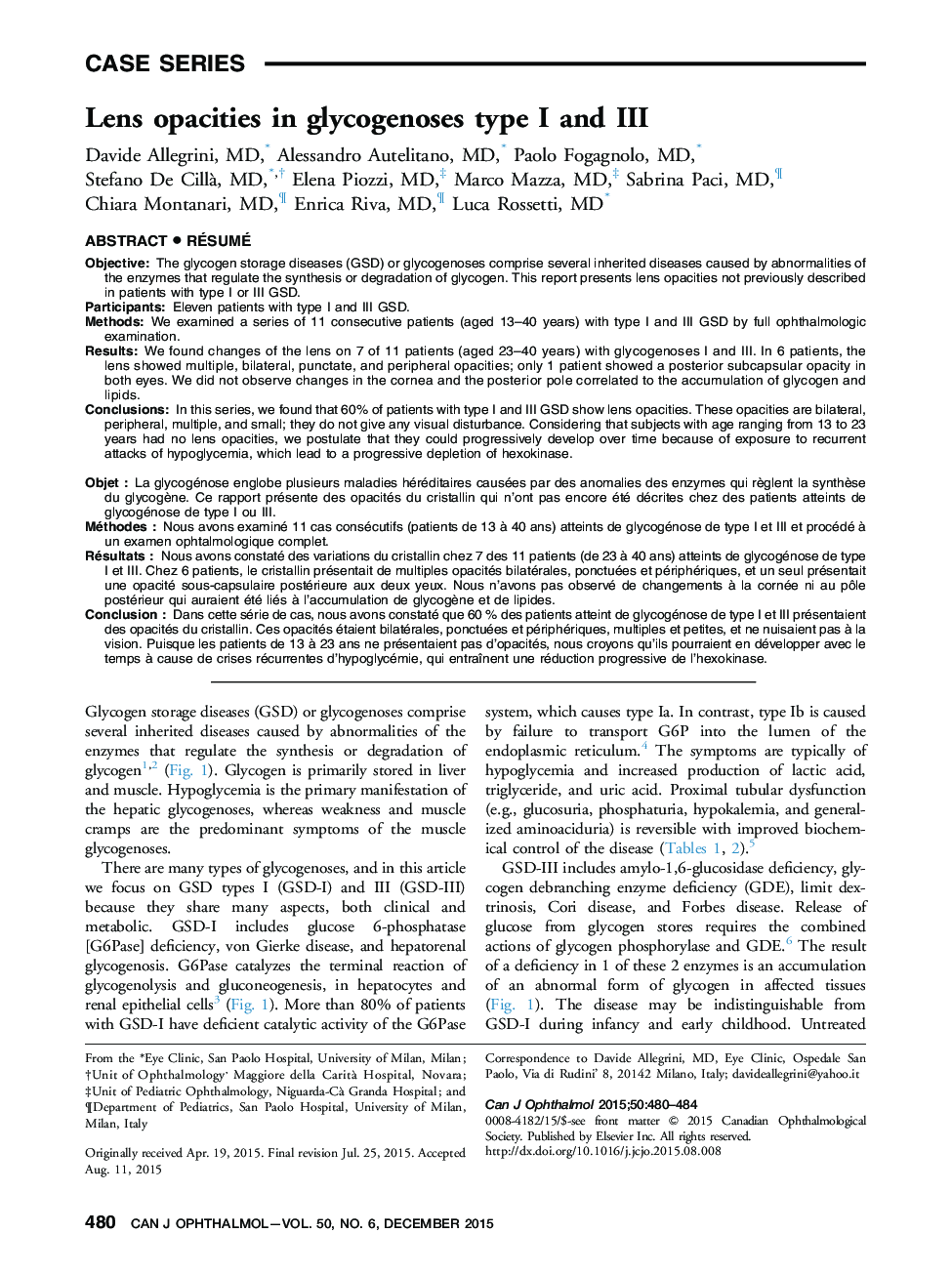| Article ID | Journal | Published Year | Pages | File Type |
|---|---|---|---|---|
| 4008999 | Canadian Journal of Ophthalmology / Journal Canadien d'Ophtalmologie | 2015 | 5 Pages |
ObjectiveThe glycogen storage diseases (GSD) or glycogenoses comprise several inherited diseases caused by abnormalities of the enzymes that regulate the synthesis or degradation of glycogen. This report presents lens opacities not previously described in patients with type I or III GSD.ParticipantsEleven patients with type I and III GSD.MethodsWe examined a series of 11 consecutive patients (aged 13–40 years) with type I and III GSD by full ophthalmologic examination.ResultsWe found changes of the lens on 7 of 11 patients (aged 23–40 years) with glycogenoses I and III. In 6 patients, the lens showed multiple, bilateral, punctate, and peripheral opacities; only 1 patient showed a posterior subcapsular opacity in both eyes. We did not observe changes in the cornea and the posterior pole correlated to the accumulation of glycogen and lipids.ConclusionsIn this series, we found that 60% of patients with type I and III GSD show lens opacities. These opacities are bilateral, peripheral, multiple, and small; they do not give any visual disturbance. Considering that subjects with age ranging from 13 to 23 years had no lens opacities, we postulate that they could progressively develop over time because of exposure to recurrent attacks of hypoglycemia, which lead to a progressive depletion of hexokinase.
RésuméObjetLa glycogénose englobe plusieurs maladies héréditaires causées par des anomalies des enzymes qui règlent la synthèse du glycogène. Ce rapport présente des opacités du cristallin qui n’ont pas encore été décrites chez des patients atteints de glycogénose de type I ou III.MéthodesNous avons examiné 11 cas consécutifs (patients de 13 à 40 ans) atteints de glycogénose de type I et III et procédé à un examen ophtalmologique complet.RésultatsNous avons constaté des variations du cristallin chez 7 des 11 patients (de 23 à 40 ans) atteints de glycogénose de type I et III. Chez 6 patients, le cristallin présentait de multiples opacités bilatérales, ponctuées et périphériques, et un seul présentait une opacité sous-capsulaire postérieure aux deux yeux. Nous n’avons pas observé de changements à la cornée ni au pôle postérieur qui auraient été liés à l’accumulation de glycogène et de lipides.ConclusionDans cette série de cas, nous avons constaté que 60 % des patients atteint de glycogénose de type I et III présentaient des opacités du cristallin. Ces opacités étaient bilatérales, ponctuées et périphériques, multiples et petites, et ne nuisaient pas à la vision. Puisque les patients de 13 à 23 ans ne présentaient pas d’opacités, nous croyons qu’ils pourraient en développer avec le temps à cause de crises récurrentes d’hypoglycémie, qui entraînent une réduction progressive de l’hexokinase.
